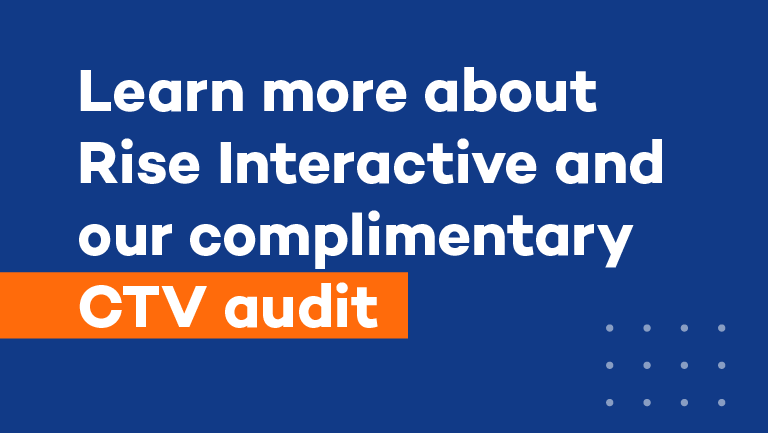Sports and TV Events Cancelled -- Now What for Marketers?
With mass cancellations of sports and live TV events (RIP March Madness), as well as a massive uptick in hours spent consuming content on smart and connected TVs as individuals hunker down at home, we have been fielding questions from many concerned clients on how to shift their strategy. The reassuring news for marketers is that those same March Madness and live sports viewers are still going to be watching shows and are just as accessible to advertisers today as they would have been otherwise. As we collectively take a breath, I wanted to share some of the most common questions and concerns we are hearing from brands in light of today’s health events as it relates to live and connected TV strategy, along with the actions brands can take to adapt.
1. What ad inventory can I buy via Connected TV devices?
Advertisers can reach their target audiences through Connected TV in a number of ways. Streaming providers such as Hulu, SlingTV, DirecTV NOW and others all sell commercial slots that can be purchased programmatically using audience targeting that is more sophisticated than linear TV (more on this below). People tend to forget that networks such as ABC and CBS also have their own apps for streaming shows that also have commercial inventory.
2. What do I do to reach my target audience now that live sports are cancelled?
One of the benefits of connected TV is the depth of audience insight and targeting available to marketers. Whether brands were banking on live TV commercials for mass reach, or because they were targeting a specific type of buyer (i.e. audience), advertisers can accomplish both of these goals through connected TV buys. For example, using third-party data, brands can target users who have demonstrated interest in live sports (online search behavior), visited a sports arena in the past year, purchased gear for a specific team, and/or watched sports related content in a linear or OTT environment. By layering some of these audience segments on top of first-party data, advertisers will still be able to reach existing sports-fanatic consumers and learn even more about their consumption habits.
At Rise, we always emphasize the importance of starting digital strategies with an audience-first mentality. Understanding who your customers are and where they consume content is the foundation of developing a plan to reach them digitally. In the case of live sports, while it is a huge bummer that I won’t be able to cheer on my team (go Badgers!), this doesn’t change the fact that I will still be consuming an increased amount of TV content in the coming weeks, and savvy digital marketers are just as capable of reaching me with their ads.
3. What else should I keep in mind?
While it’s a bit early to share definitive data, it’s likely we’ll see shifts in consumption habits from a dayparting standpoint. With fewer consumers leaving the house for their 9-to-5, we may see more midday consumption as viewers adapt to new working from home schedules. With all of this increased screen time, though, only time will tell if consumers will take action during this ‘new normal’. With that said, it’s important to remember that this phase will pass, and there is still tremendous value for brands to stay top-of-mind with consumers now. Another consideration I’ve been emphasizing with clients is the need to re-think what KPIs make sense to measure success. Campaigns that had been tracking in-store visits to inform media optimizations, for example, will need to pivot.
We are learning hour-by-hour how these consumption and conversion patterns are changing with our clients in the new stay-at-home environment, and we will be sharing more of our findings as time goes on.
4. What do you think will happen next?
With the unknown duration of the social distancing and quarantine recommendations, it’s likely that consumers are going to continue to seek out free entertainment. It’s likely that we’ll see increases in viewership for bigger players like Hulu and SlingTV who offer free trials, as well as smaller players like Pluto TV and Tubi that rely on ads to support their zero-cost model to viewers. The growth of inventory sources means more reach and more options for marketers.
What’s most important is for brands to remember that this is a time of uncertainty for everyone. The overarching messaging of your advertising should be about how you can help be there for your customers. With that said, Rise is here for you too. If you’d like to chat more with me or another Rise expert about how to update your digital strategy given our new temporary normal, reach out via the form.
About Rise Interactive
Rise Interactive is an award-winning digital marketing agency, specializing in media, analytics, and creative & development. The agency is a strategic partner, helping marketing leaders make smarter investment decisions, grounded in data insights. Rise manages enterprise-level campaigns and analytics across all channels of digital marketing.
